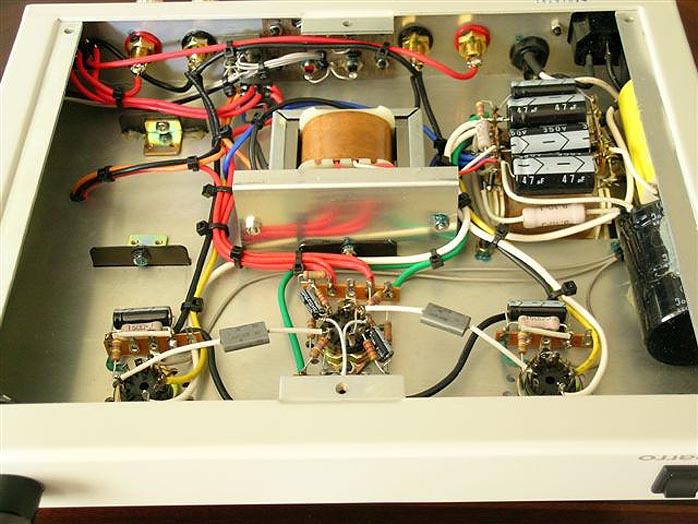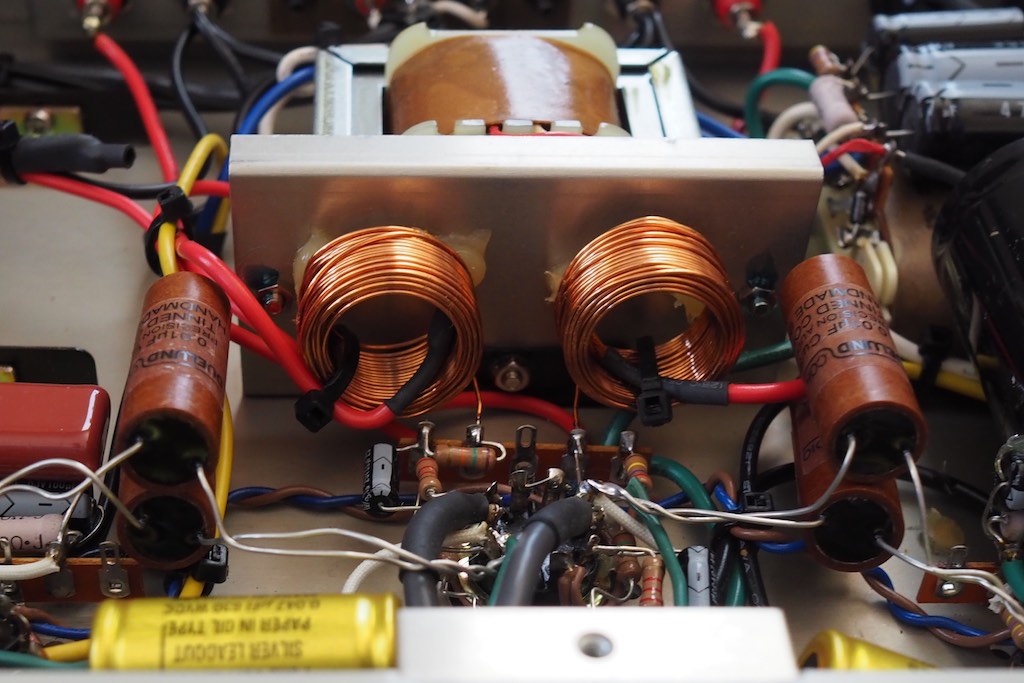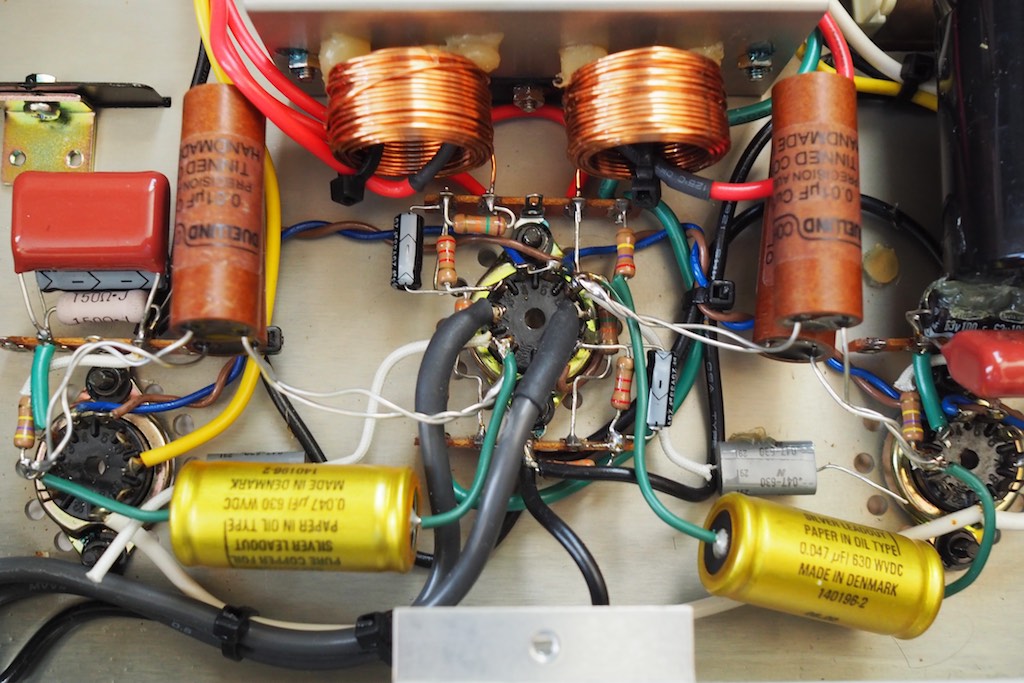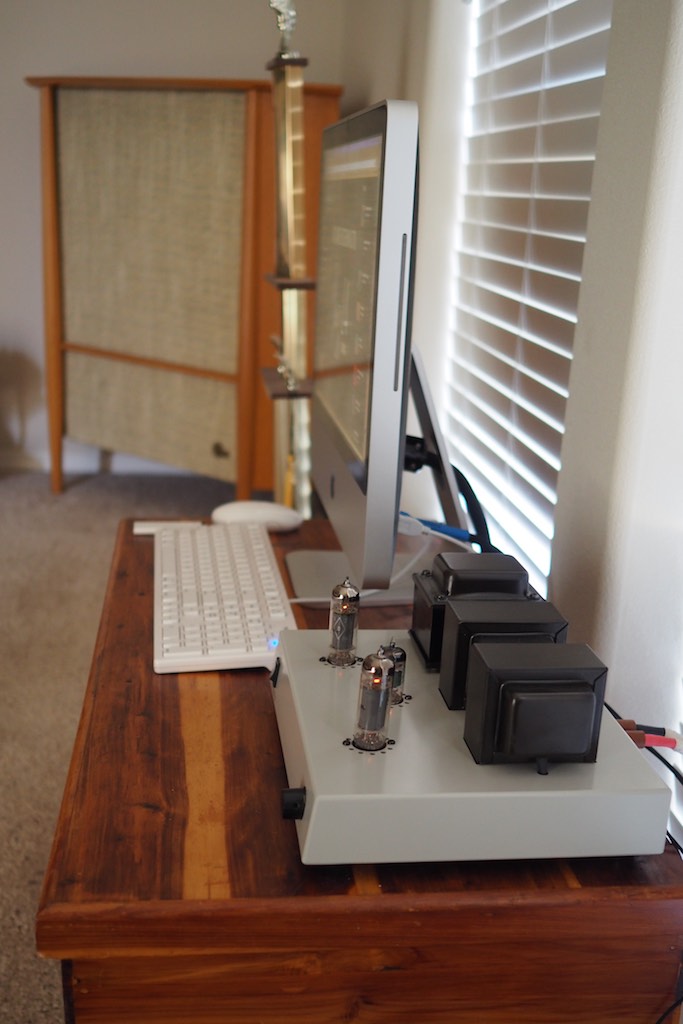I've been using the sweet little Almarro A205A EL84 integrated amplifier to power my vintage Altec 832A Corona loudspeakers that I'm using in my bedroom system, and it's a really nice match for them.
The volume pot has been kind of noisy in the A205A so I thought I'd pop the bottom off and squirt a little DeoxIT F5 on it to quiet it down.
I popped the bottom off and gave the volume pot the DeoxIT treatment and worked it back and forth a bit to spread it around and let it do its thing.
I've never had the bottom plate off the A205A (reviewed for 6Moons back in May of 2004), just the A205A Mk II version that I reviewed for 6Moons way back in March of 2006 (below).
A popular hot rod mod of the Almarro A205A Mk II at the time was to replace the stock coupling caps - the two grey ones towards the bottom of the photo above - with some better caps, with some preferring the Teflon V-Cap's and others Jenson PIO's.
Also, one could make the little Almarro A205A sound a bit warmer by replacing the stock 0.047uF coupling caps with 0.068uF coupling caps.
After I finished with the lubing the volume pot I was looking over the circuit and I noticed the original grey coupling caps were disconnected and had been replaced with some nice Jensen PIO's.
There were quite a few changes that were made between the original A205A and the A205A Mk II, but the Jensen PIO coupling caps go a long way for explaining why I preferred the musicality of the older A205A to the newer A205A Mk II.
Back when I reviewed the A205A Mk II I said, "What we have here with the MkII is an example of the classic HiFi conundrum: The MkII version of the A205A sounds noticeably better at least on well-recorded material but the original A205A is more musical and easier on the ears particularly with less well-recorded material."
So the original A205A I reviewed had the coupling caps upgraded before it ever got to me, which helps explain its richer and more musical tone.
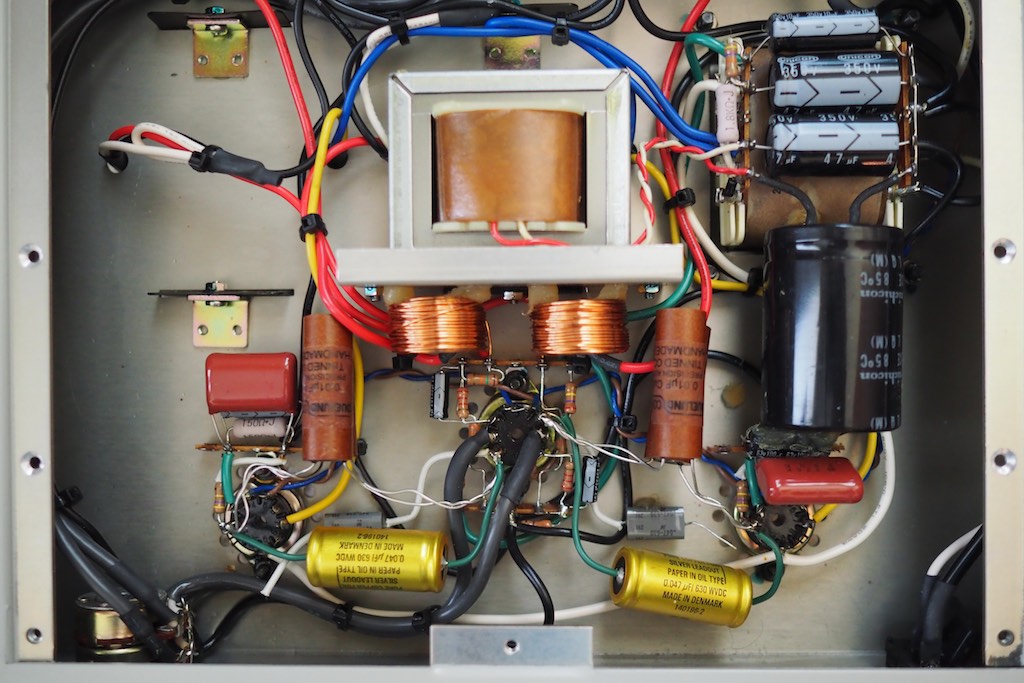
Almarro A205A with a quad of Duelund CAST tinned-copper 0.01uF coupling caps added in parallel to the Jensens.
But that aside, I couldn't help wonder what would happen if I bumped the Jensen 0.47uF coupling cap capacitance up with some Duelund CAST 0.01uF tinned-copper coupling caps.
So I decided to add two each of Duelund CAST 0.01uF tinned-copper coupling caps in parallel with the Jensen's to give a combined coupling capacitance of 0.067uF.
After getting everything buttoned back up, I put my hot-rodded Almarro A205A back into the system.
The freshly lubed volume pot was silky smooth and totally quiet, so the volume pot refresh was a resounding success.
The addition of the quad of Duelund CAST 0.01uF coupling caps to the Jensen PIO coupling caps gave more of a mixed result.
The addition of the Duelund CAST 0.01uF coupling caps opened up everything considerably, but did not warm up the presentation as I'd hoped for with the little Almarro A205A (it could use a little extra warmth).
The enhanced openness of the Duelund CAST 0.01uF coupling caps in the Almarro A205A was flattering for the lows and mids of the Corona's, but up top it may turn out to be too much for the already fussy high-frequency presentation of their vintage Altec crossovers.
I'll report back in this post after I get some more time on the Almarro with its additional coupling caps, perhaps they'll settle in a bit more and smooth out in the highs.
¸¸.•*¨*•♫♪¸¸.•*¨*•♫♪¸¸.•*¨*•♫♪
Update: It's surprising how much things can change in 24 hours. The A205A's presentation has really smoothed out so that the highs are mostly blended-in in a flattering fashion, but there's still a little more that needs to happen.
Those of you who have been following the developing story know that the 0.22uF Duelund CAST tinned-copper caps that I put in my MX110Z cathode follower positions were stunning right from the start, as they were when I tried them in my Altec A5's crossovers in the HF circuit. Ditto with the 0.01 Duelund CAST tinned-copper coupling caps when I tried them in the A5 crossover.
So I was a little surprised the same thing didn't happen with the 0.01uF Duelund CAST tinned-copper coupling caps in the little Almarro right off the bat. I'm thinking it would be better if I ran a pair 0.047uF or 0.068uF Duelund CAST tinned-copper caps alone instead of supplement the Jensen's, but I went with what I had on hand.
I'm going to let it play some more over the next week and will report on any further developments.
Secret: I was going to share a Duelund secret with you in this post and forgot. Frederik mentioned to me he is contemplating building an insulated version of the DCA12GA wire suitable for use in a power cord. I don't have any details or know anything about the timing yet, but I'll keep you posted as I find out more.
If/when that comes to pass I think I'll do a project where I build a power chord for the Almarro A205A (hard-wired), and a detachable AC power cord terminated with a 15A Marinco 8215 NEMA hospital-grade power plug and a matching Marinco 320 IEC connector that I can try on a couple different pieces of gear.
¸¸.•*¨*•♫♪¸¸.•*¨*•♫♪¸¸.•*¨*•♫♪
Update 2: Now, after 3 days of run-in time, the 0.01uF Duelund CAST tinned-copper coupling caps have blended in seamlessly and offer a very nice presentation of the music. Cymbals, and percussion in general, sounding rich and startlingly real at the same time, and the sense of space has opened up significantly, as is typical with Duelund's tinned-copper capacitors.
I was just doing this for a "for fun" experiment, but if you were going to do a coupling cap mod to your own A205A I would recommend either a 0.047uF or 0.068uF Duelund CAST tinned-copper capacitor as the coupling caps, depending on what you're trying to accomplish.
Ok, that's it for now.
As always, thanks for stopping by, and may the tone be with you!





